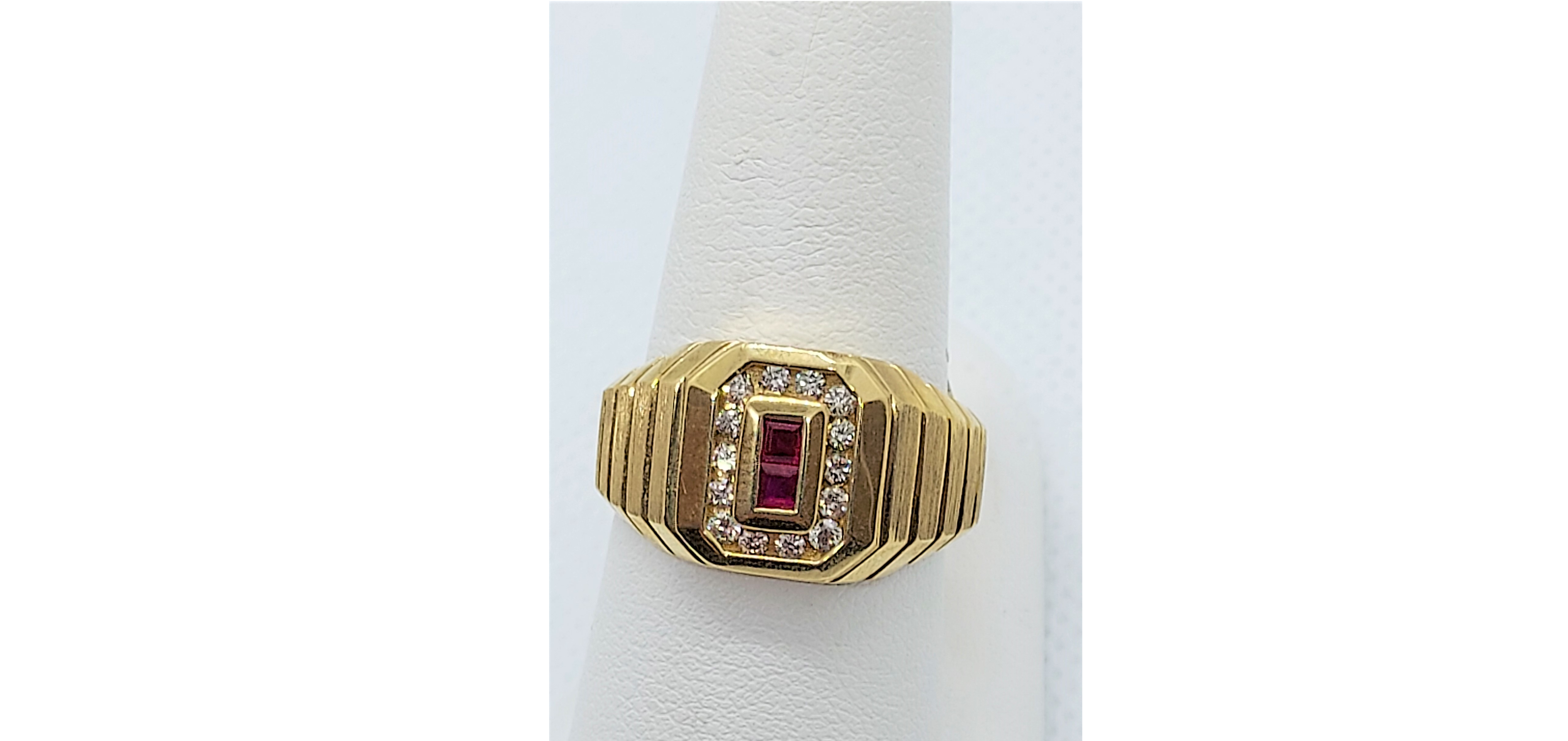R



RUBY
Name: Ruby comes from the Latin word “Rubeus,” meaning “red”. Ruby has been known as the ‘king of precious stones’.
Family Group: Ruby is a red corundum.
Color: It's color comes from chromium and has a color range from a deep cochineal-red to pale rose-red, purplish-red, and orangey-red. Ruby’s pleochroism is a strong orangey-red or a purplish-red. Today, the most sought-after color of ruby is a medium or medium dark vivid red.
Treatments: Heat and fracture filling with oil, epoxy, or glass are done to improve clarity and/or color. Dyeing is sometimes done to improve color.
Moh’s Hardness: 9.
Toughness: excellent; but certain treatments or large fractures or inclusion scan be less durable.
Locations Found: Myanmar (Burma), Thailand, Cambodia, Vietnam, Afghanistan, Madagascar, Sri Lanka, Kenya, and the United States of America (North Carolina and Montana).
Birthstone: July (1912, National Association of Jeweler’s; Polish).
Wedding Anniversaries: 15th and 40th.
Zodiac Signs: Cancer, Leo, Capricorn, and Taurus.
Chakra Associations: Heart, Root.
Historical Associations: courage; passion; vitality; good fortune; invincibility; love; romance; prosperity; peace; willpower; fire; protection.
Historically Used to Treat: protect against illness; hemorrhages; flatulence; biliousness; inflammatory diseases; to staunch bleeding; an antidote to poison.
Care: High heat can cause a change in color or clarity. It can damage or destroy fracture- and cavity-fillings. Generally stable in light, but heat from bright lights can cause oil to leak or dry out. Chemicals can harm fillings and remove oil; soldering flux containing boron, and firecoat made with boric acid powder, will etch the surface of even untreated stones. Ultrasonic and steam cleaning is usually safe, but never for fracture- or cavity-filled stones. Warm, soapy water is safe but avoid strong detergents and vigorous scrubbing on oiled stones.
Imitations: Glass.
Synthetics: Czochralski; Flame Fusion; Floating Zone; Flux; Hydrothermal.
